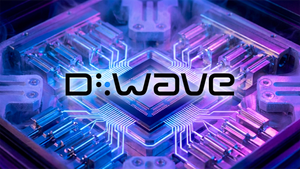Financial News
Microsoft's $30 Billion AI Bet: A Deep Dive into its Cloud and AI Leadership Ambitions

Redmond, WA – September 15, 2025 – Microsoft Corporation (NASDAQ: MSFT) is poised to make an unprecedented capital expenditure exceeding $30 billion in the first fiscal quarter of 2026 (July-September 2025), primarily targeting the expansion of its artificial intelligence (AI) infrastructure. This colossal outlay, confirmed during the company's Q4 FY25 earnings call, significantly surpasses previous analyst expectations and underscores Microsoft's aggressive strategy to not only meet but also shape the burgeoning global demand for AI computing power.
This monumental investment signals Microsoft's unwavering commitment to solidifying its leadership in both the cloud computing and AI sectors. It aims to rapidly scale its Azure cloud platform, making every region "AI-first," and overcome previous supply constraints that have limited its capacity to deliver cutting-edge AI-powered solutions. While such heavy upfront costs are expected to exert near-term pressure on cloud gross margins, the company is betting on these strategic expenditures to translate into sustained double-digit revenue and operating income growth for FY26 and beyond, cementing its position as a dominant force in the intelligent future.
Unprecedented Investment: Microsoft Fuels the AI Engine
Microsoft's anticipated Q1 FY26 capital expenditure of over $30 billion represents its largest-ever quarterly spending, a dramatic increase from the $24.2 billion reported in the preceding fiscal fourth quarter. This substantial allocation is predominantly earmarked for bolstering its AI infrastructure, which includes the aggressive expansion of hyperscale data centers, the procurement of high-performance computing resources such as NVIDIA (NASDAQ: NVDA) Graphics Processing Units (GPUs), and the development of custom silicon like Microsoft's Maia 100 and Maia 200 chips.
The core of this investment lies in building out AI-optimized data centers, with plans for over 25 new Azure regions spanning North America, Europe, Asia, and Africa. These state-of-the-art facilities are specifically designed for liquid-cooled, high-density GPU clusters, crucial for supporting advanced multimodal model training, retrieval, and inferencing. Microsoft's CFO, Amy Hood, has clarified that these investments are "correlated to basically contracted, on-the-books business that we need to deliver," indicating a robust and confirmed customer demand for AI services. Further enhancing its capacity, Microsoft recently finalized a major deal with Nebius Group N.V., an AI-focused infrastructure provider, valued between $17.4 billion and $19.4 billion over five years, securing dedicated GPU infrastructure capacity without incurring all the capital expenditures directly on its balance sheet.
This strategic push is the culmination of a multi-year effort that intensified with the generative AI boom sparked by the late 2022 launch of ChatGPT. Microsoft's pivotal partnership with OpenAI, formed in 2019, laid the groundwork for its current AI dominance. Throughout fiscal year 2024, Microsoft's total capital expenditures reached approximately $50 billion, with a significant portion dedicated to AI infrastructure. In January 2025, Microsoft Vice Chair and President Brad Smith announced plans to spend around $80 billion on AI-enabled data centers throughout fiscal year 2025. The Q4 FY25 earnings call in July saw capital spending climb to $24.2 billion, with Amy Hood forecasting the record-breaking $30 billion+ for Q1 FY26, driven by strong AI demand signals.
Key stakeholders include Microsoft's leadership, particularly CEO Satya Nadella and CFO Amy Hood, who are orchestrating this aggressive strategy. The Azure cloud platform is central to the build-out, serving as the foundation for AI model training and deployment. Strategic partners like OpenAI rely heavily on Azure, while hardware providers like NVIDIA (NASDAQ: NVDA) and Advanced Micro Devices (NASDAQ: AMD), and infrastructure providers like Nebius Group N.V., are crucial suppliers. Initial market reactions have been largely positive, with Microsoft's stock seeing significant gains driven by strong earnings and the perception that AI investments are paying off. Analysts largely maintain "Buy" ratings, projecting a $4 trillion valuation for Microsoft (NASDAQ: MSFT), citing underappreciated AI upside and robust Azure revenue growth, despite some scrutiny regarding the cost-effectiveness and potential "overbuild" of data centers.
The Economic Echo Chamber: Winners and Losers Emerge
Microsoft's massive AI infrastructure investment will inevitably send ripple effects across the technology supply chain, creating clear winners and posing challenges for others. The companies providing the foundational components for this AI revolution are set to reap significant rewards.
Foremost among the beneficiaries is NVIDIA (NASDAQ: NVDA), whose GPUs are the bedrock of AI training and inference. Microsoft's deep integration of NVIDIA's Grace Blackwell GB200 superchip and Quantum-X800 InfiniBand networking into Azure, alongside the upcoming NVIDIA Blackwell Ultra GPU-based VMs, solidifies their interdependent relationship. The multi-billion-dollar deal with Nebius, heavily reliant on NVIDIA's GPUs, further bolsters NVIDIA's sales. Advanced Micro Devices (NASDAQ: AMD) is also a significant winner, as Microsoft actively collaborates to integrate AMD's MI300X AI chips into Azure, providing a crucial alternative to NVIDIA and diversifying its AI processor options. Furthermore, Intel (NASDAQ: INTC) stands to gain through its foundry business, having secured a deal exceeding $15 billion to manufacture Microsoft-designed AI chips using its advanced 18A process technology, and through collaborations on AI software optimization for Azure and AI capabilities in Windows PCs.
Beyond chipmakers, Data Center REITs and Infrastructure Providers will thrive from the immense demand for physical data center space, construction, and related services, particularly in the United States, where over half of Microsoft's AI infrastructure capital is being deployed. Networking Equipment Suppliers, such as those in the Ultra Accelerator Link (UALink) consortium (including AMD, Broadcom (NASDAQ: AVGO), Cisco (NASDAQ: CSCO), Google (NASDAQ: GOOGL), HPE (NYSE: HPE), Intel (NASDAQ: INTC), and Meta (NASDAQ: META)), will see increased demand for high-speed, low-latency interconnects. Cooling Technology Companies are also on the rise, as AI data centers necessitate advanced liquid-cooling solutions to manage extreme heat, a technology Microsoft is actively piloting and standardizing. Finally, Energy and Utility Companies will experience a significant surge in demand for reliable and sustainable power to fuel these burgeoning AI facilities.
However, Microsoft's strategic moves also present challenges. While major chipmakers benefit broadly, Microsoft's push towards custom AI silicon, such as its Azure Maia 100 AI accelerator and Azure Cobalt CPU, could, in the long term, reduce its reliance on general-purpose chips from external suppliers for certain workloads, intensifying competition in specific AI chip niches. Similarly, Microsoft's development of its own networking card (bolstered by the acquisition of Fungible) could impact traditional networking equipment providers if it scales in-house production significantly. Lastly, Smaller Cloud Providers and Companies Lacking Substantial Capital may struggle to keep pace with the massive capital expenditures and rapid technological advancements in AI infrastructure by giants like Microsoft, creating a higher barrier to entry and favoring established players with deep financial resources.
AI Infrastructure: Reshaping the Global Tech Landscape
Microsoft's projected $30 billion-plus capital expenditure in Q1 FY26 for AI infrastructure is not merely a corporate spending spree; it is a seismic event that will profoundly impact the broader industry, driving trends, creating ripple effects, and inevitably attracting regulatory scrutiny. This investment represents a significant acceleration in the global "AI arms race" among tech giants.
This colossal investment aligns perfectly with a broader industry trend of surging demand for AI infrastructure, driven by the explosive growth of generative AI and the increasing prioritization of AI adoption across businesses. Microsoft's extensive data center expansion, aimed at overcoming supply constraints for chips and servers, reflects a global phenomenon, with AI data center spending projected to exceed $1.4 trillion by 2027. It also underscores a strategic shift towards in-house AI development and vertical integration, allowing Microsoft (NASDAQ: MSFT) to optimize its AI offerings for performance, cost-efficiency, and scalability, reducing reliance on third-party dependencies even while maintaining key partnerships.
The ripple effects on competitors and partners will be substantial. The investment directly intensifies competition with fellow cloud providers Amazon Web Services (AWS) and Google Cloud (NASDAQ: GOOGL), as Microsoft strives to solidify its leadership in AI application and cloud services. While Microsoft's cloud business still trails AWS in overall market share, its growing Azure sales, significantly boosted by AI, demonstrate the effectiveness of these investments. The semiconductor industry, including NVIDIA (NASDAQ: NVDA), AMD (NASDAQ: AMD), and Intel (NASDAQ: INTC), will continue to receive a massive boon from the soaring demand for high-performance computing systems. However, Microsoft's pivot towards custom silicon could introduce new competition for some chip segments. The relationship with strategic partners like OpenAI (which also utilizes other cloud providers) highlights Microsoft's dual strategy of collaboration and in-house development to ensure resilience and competitiveness.
Such large-scale investment and increasing market dominance inevitably attract regulatory attention. Microsoft's growing influence in cloud and AI is already under intense antitrust scrutiny from bodies like the U.S. Federal Trade Commission (FTC) and the European Union (EU). Concerns range from potential market distortion and restrictive licensing terms to the competitive impact of strategic partnerships. Furthermore, the immense energy and water demands of AI data centers are raising significant environmental, social, and governance (ESG) concerns. Regulatory bodies are beginning to impose restrictions on data center construction, and Microsoft is actively investing in renewable energy and exploring advanced cooling solutions. The scale of these investments is also prompting discussions around AI governance and ethical AI practices, with Microsoft itself proposing regulatory frameworks for powerful AI models and advanced data centers. Historically, the current AI revolution is widely compared to the Industrial and Digital Revolutions, fundamentally reshaping economies and investment strategies, while also echoing past "tech bubbles" and "AI winters," prompting scrutiny on the sustainability of current valuations.
The AI Horizon: Navigating What Comes Next
Microsoft's aggressive AI infrastructure investment heralds a dynamic future, marked by rapid technological advancements, evolving market dynamics, and continuous strategic adaptation. Both in the short and long term, this commitment is set to redefine Microsoft's trajectory and reverberate across the entire technology landscape.
In the short-term (next 1-2 years), Microsoft (NASDAQ: MSFT) is poised for accelerated growth in its Azure cloud computing services, driven directly by the resolution of AI-related supply constraints and surging customer demand. This will further enhance its market share against rivals. Expect deeper and more seamless integration of AI capabilities across all Microsoft products, including Microsoft 365 Copilot and AI-powered Windows PCs featuring dedicated Neural Processing Units (NPUs), fostering greater "ecosystem lock-in." The company will also advance its proprietary AI models and custom silicon, such as Azure Maia and Azure Cobalt chips, to optimize performance and reduce reliance on external suppliers. Strategic partnerships, exemplified by the $17.4 billion deal with Nebius for dedicated NVIDIA (NASDAQ: NVDA) GPU capacity, will continue to play a crucial role in rapidly scaling its AI services. For the broader industry, this means an intensified "AI arms race," continued booming demand for AI infrastructure components, and the expansion of AI-as-a-Service (AIaaS) offerings, making advanced AI more accessible to businesses.
Looking at the long-term (3-5+ years), Microsoft aims to solidify its status as an "AI-first" company, with AI deeply embedded into its core offerings and transforming how businesses and consumers interact with technology. This expansive digital ecosystem is designed to be a sustainable cash flow engine, generating recurring revenue through user dependency and high renewal rates. Microsoft's strong enterprise foothold, bolstered by continuous investment, positions it to dominate enterprise AI and drive industry-wide transformations across sectors like healthcare, finance, and manufacturing. The long-term vision also includes the proliferation of hyper-personalized and "agentic AI" experiences, where intelligent systems make autonomous decisions and adapt to changing environments, potentially redefining operations and reducing costs across industries. For the broader industry, anticipate further vertical integration among tech giants, the emergence of entirely new AI-driven industries and services, and an increasing focus on energy efficiency and sustainability to manage the massive power demands of AI infrastructure.
Navigating this future will require significant strategic pivots. Microsoft must balance massive investment with profitability, ensuring that high capital expenditures translate into sustainable returns and not just top-line growth, especially as high spending can strain margins. It will also need to adeptly navigate the complex regulatory and ethical landscape surrounding AI, addressing antitrust concerns, data privacy, and ethical AI practices to maintain trust and avoid disruptions. Continuous talent and skills development will be crucial to meet the demands of an AI-first environment, alongside bolstering supply chain resilience for critical components like GPUs. The broader industry will need to re-evaluate R&D priorities, invest in robust data management and quality, implement effective MLOps (Machine Learning Operations) practices, and push for interoperability and open standards to prevent vendor lock-in. Market opportunities abound in core AI infrastructure, industry-specific AI solutions, AI-driven software, ethical AI tools, and edge AI, while challenges include high implementation costs, technical complexity, data privacy concerns, and market volatility.
The AI Epoch: A Concluding Outlook
Microsoft's anticipated capital expenditures exceeding $30 billion in Q1 FY26 for AI infrastructure represent far more than just a financial forecast; they signify a calculated and aggressive strategy to cement the company's position at the forefront of the artificial intelligence epoch. This monumental investment underscores a deep commitment to scaling its Azure cloud capabilities and integrating AI into the very fabric of its extensive product ecosystem.
Key takeaways from this strategic maneuver are clear: Microsoft is aggressively responding to "red-hot demand" for AI computing power, leveraging substantial capital to overcome supply constraints and drive unprecedented growth in its Azure segment. The company's Q4 FY25 earnings call highlighted robust Azure performance, with AI-related services contributing significantly to its growth. This investment is not speculative; it is directly tied to "contracted, on-the-books business," demonstrating a clear and immediate demand signal from customers. Furthermore, the commitment to developing both proprietary AI models and custom silicon, alongside strategic partnerships, reveals a multi-faceted approach to long-term AI leadership.
Assessing the market moving forward, Microsoft's actions accelerate the global "AI arms race," intensifying competition among hyperscale cloud providers like Amazon Web Services (AWS) and Google Cloud (NASDAQ: GOOGL). This massive spending fuels an AI infrastructure boom, boosting demand for high-performance chips, advanced data centers, and specialized cooling technologies, creating significant opportunities for semiconductor and infrastructure suppliers. While expected to exert modest pressure on operating margins in the near term, the investment is a long-term play, aiming to establish AI as a structural tailwind for sustained revenue growth and increased market share. The economic impact is already tangible, with AI investments contributing to GDP growth, though the ultimate translation into widespread productivity gains remains an ongoing area of scrutiny.
The significance and lasting impact of this investment cannot be overstated. Microsoft is building an "AI flywheel"—a powerful ecosystem where deeply integrated AI across Azure, Office 365, and Windows fosters user dependency, generates sustainable recurring revenue, and creates high barriers to exit. By positioning itself as an "AI-first" company, Microsoft (NASDAQ: MSFT) is not just participating in the AI revolution; it is actively shaping it, establishing a foundational role in the future of enterprise computing and innovation. This strategy promises to redefine how businesses operate and how individuals interact with technology, making AI an indispensable component of the digital experience.
For investors, the coming months will be crucial. Watch for sustained robust growth in Azure AI revenue, as this will be the primary validation of the investment's effectiveness. Closely monitor operating margins in FY26 to assess the balance between capital expenditure and profitability. Track the adoption rates of Microsoft's AI-powered services like Microsoft 365 Copilot and GitHub Copilot, as this indicates monetization success. Keep an eye on the competitive landscape, supply chain resilience, and any new innovations or strategic partnerships. Finally, be mindful of evolving regulatory scrutiny around AI ethics, data governance, and market concentration, which could introduce new challenges. Ultimately, Microsoft's aggressive AI infrastructure investment is a bold, calculated gamble designed to secure a dominant, high-growth position in the unfolding AI era, and its successful execution will profoundly shape the company's future and the broader technological landscape.
More News
View More




Recent Quotes
View MoreQuotes delayed at least 20 minutes.
By accessing this page, you agree to the Privacy Policy and Terms Of Service.



